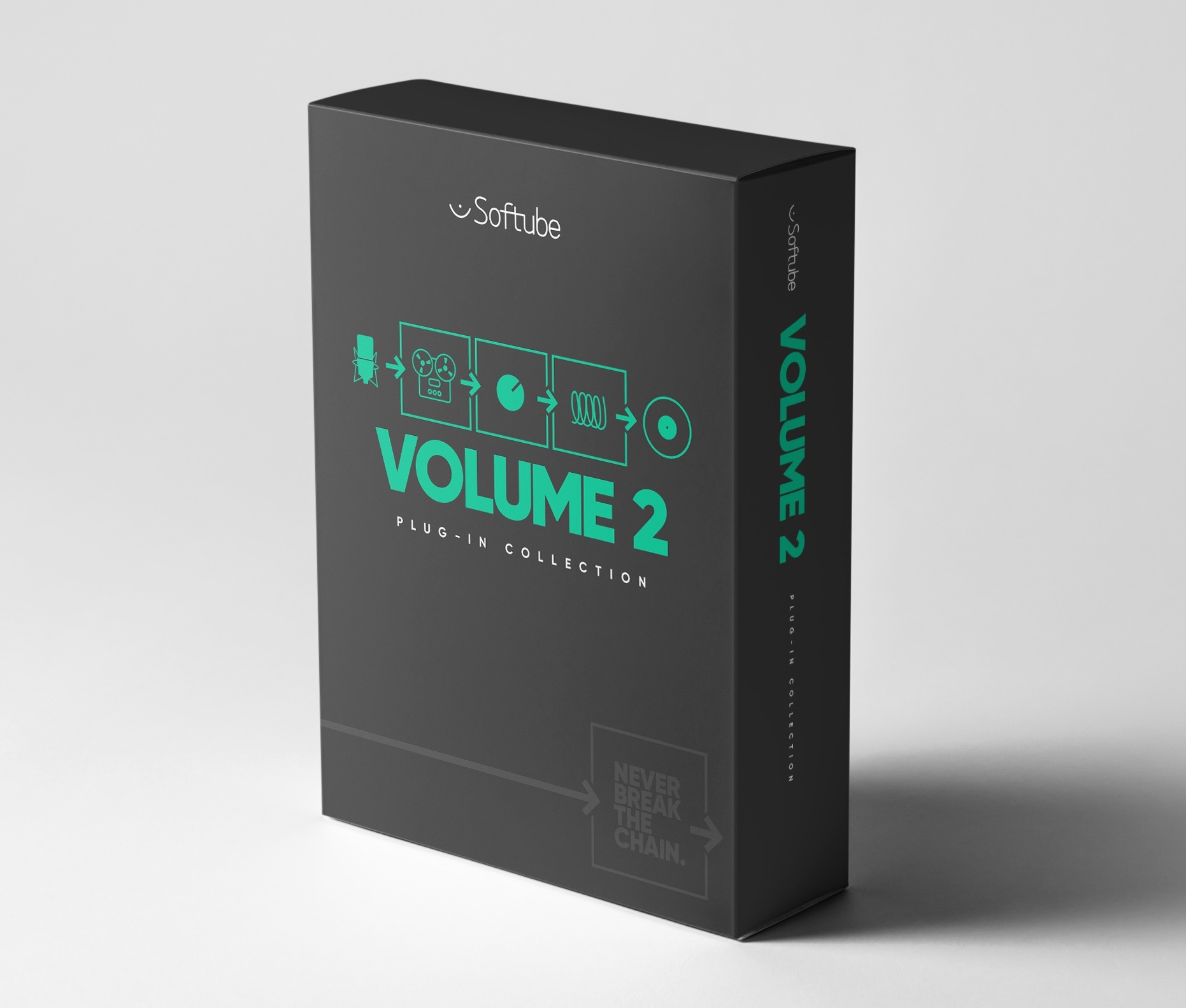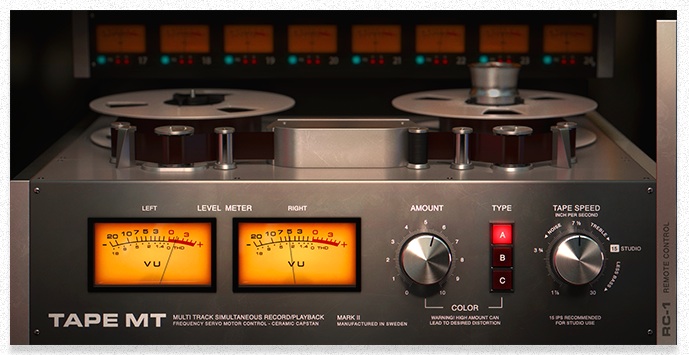New Software Review: Volume 2 by Softube

Softube introduces Volume 2, an expansive 19-module toolkit that aims to cover all of your production needs.
Oscar Öberg started Softube in 2002 with the goal of creating the best-sounding guitar amp simulation to date. Ever since, Softube has been continuing on in pursuit of developing unparalleled signal processors.
Most recently, Softube released Volume 2, a collection of powerful EQs, compressors, channel strips and more, inspired by analog units from companies like Summit Audio, Trident, and Drawmer. Volume 2 introduces three new plugins: Tape, Fix Phaser, and the Weiss MM-1 Mastering Maximizer. With the release of Volume 2, Softube has also activated their new Preset Collection browser, which adds searchable presets for each plugin, tailor-made for different uses.
Since Volume 2 includes a whopping 19 plugins (many of which have their own reviews), this review will focus primarily on the new plugins.
Features
The Weiss MM-1 Mastering Maximizer is an innovative new take on the legendary Weiss DS1-MK3 mastering compressor (and plugin by Softube). Its intuitive interface features three knobs for Amount, Parallel Mix and Limiter Gain, as well as buttons for selecting from five universal mastering techniques designed for any genre of music. You can choose between Transparent, Loud, Punch, Wide, and De-ess algorithms to engage complicated mastering processes under the hood with the touch of a button. Simply increase the Amount knob for more gain reduction and turn up the Limiter Gain to make your tracks louder.
Tape is Softube’s fastest-selling plugin to date, capable of instantly adding analog warmth to your tracks. Simply select the desired tape type and speed, and crank up the Amount knob for vintage vibe. Type A is based on a classic Swiss high end reel-to-reel machine (most likely a Studer). Type B is much more colorful—it’s a transformer-based machine which adds extra weight and cream to the low end (most likely an ATR). Type C is based on a British tape machine with a distinct vintage vibe (most likely an EMI).
Use the Tape Speed knob to select operating speeds as high as the studio-standard 15 or 30 IPS, or add some grungy lo-fi vibes to your track with tape speeds as low as 1 IPS—a feature hardware tape machines can’t recreate. You can flip the Level/THD switch to meter the amount of total harmonic distortion, and dial in the perfect amount of grit and grime with the Amount knob.
Softube allows you to get under the hood with the “remote control” section and tweak settings like Dry/Wet amount, Speed Stability, and Crosstalk, or fine-tune the high end with the built-in mastering-grade high frequency filter. Tape also features Tape Stop/Run buttons for authentic tape effects that are perfect for music production!

Softube joins the ranks of plugin manufacturers offering tape machine emulations, this model being their fastest-selling offering to date.
Fix Phaser was designed in close collaboration with audio legend Paul Wolff of Fix Audio Designs. You can bring static tracks to life by creating phase effects with up to ten stages and three shapes using the Region, Envelope, Offset, Sweep, and Rate controls. There is a DAW Sync button, which when engaged locks Fix Phaser to your session tempo.
Remember, these plugins are just the tip of the iceberg. Visit the Volume 2 product page for a full list of all processors available in this comprehensive suite.
In Use
In order to see what the new Mastering Maximizer could do, I imported a yet-to-be-mastered mix and loaded up the MM-1. I added about 7dB using the Limiter Gain knob with the Parallel Mix at 100% wet. I left the Amount knob at 50%, which applied between 1-3dB of gain reduction throughout the song.
I tried out all five modes, each of which did exactly as they promised. Transparent mode applied slightly more gain reduction than the rest, but it still sounded clean and smooth. Loud mode had a noticeably increased perceived loudness, while Punch mode accentuated the transient response of the mix. Wide mode instantly added width and depth, while De-ess mode cleaned up the high end without sacrificing sound quality. (If you want to load up any of these audio samples in your own DAW in full resolution, click here to download.)
Next, I bypassed the MM-1 and loaded Tape. After exploring the interface and creating some far-out experimental tones, I returned the machine back to the default settings: Tape Speed at 15 IPS and the Amount knob at 5.
I toggled through all three tape types to decide which I liked best, and while they each offered some minor tonal variations, they all sounded more or less the same. I toggled the VU meter over to THD mode and saw that I wasn’t pushing the machine hard enough to get the full coloration of the tape. So, I cranked the Amount knob up to 9, which applied between 1-2% THD throughout the song and allowed the unique sonic characteristics of each tape type to shine.
To experiment with Fix Phaser, I imported the stems from this session and focused on individual instruments. After tweaking the knobs for a bit, I realized this tiny little plugin had a lot to offer, but it would take hours to discover it all. So, I opened up the Preset Collection to see what other engineers had come up with. It was loaded with a diverse collection of easily searchable presets for a variety of instruments. As I selected different presets, a short blurb came up on the left-hand side of the browser window with a detailed description of the effect and how to use it. Here’s an example:
Vibrato Stereo: Put motion into your stereo information. Get your sides spinning using fast-sweeping phasing.
Usage: The preset is set up to be used as an insert effect.
Tips and Tweaks: Adjust Mix and Rate to dial in the right energy and choose Slow/Fast for desired impact on your transient material.
Info: Fast-sweeping, 10-stage phaser in Effect mode.
This actually made browsing through presets enjoyable. Not only did I quickly find a preset for the effect I was going for, I had a road map for dialing in the perfect settings. After experimenting for an admittedly excessive amount of time, I printed my favorite subtle and not-so-subtle effects for guitar and keyboards.
To Be Critical
As far as the three new plugins introduced in Volume 2, there’s not much to be critical of. The Weiss MM-1 and Tape plugins are as simple as they are powerful, and offer an array of different tones for shaping your music. Fix Phaser was a lot of fun to use, but while it does its job incredibly well, I don’t personally find myself reaching for a phaser very often. I also loved the Preset Collection. It was incredibly easy to use and I can’t wait to see what new presets are added over time.
Pretty much every plugin in Volume 2 is extremely good at what it does. My only critique of this bundle is that it’s a bit eclectic. With the release of the MM-1 Mastering Maximizer, Softube has completed their signal chain—offering plugins for every step of the music-making process.
While there are plenty of great plugins in this bundle, I don’t think there are enough options for mixing or mastering engineers to survive on if Volume 2 was their only resource. Plus, there are a lot of music production tools/plugins they may not need (for example, the synth modules). Inversely, artists and producers may love all the great creative tools but have no need for some of the advanced signal processors.
Summing it Up
The plugins available in Softube’s Volume 2 are unparalleled; they each offer a unique take on a piece of classic analog gear. However, this particular collection of plugins may not cover all of your creative needs, and thus may not be the right fit for everyone. At $499, Volume 2 is a welcome addition to any plugin collection, but it probably won’t be your primary mixing bundle.
If that’s the case, I strongly recommend checking out Softube’s à la carte options and purchasing a few choice plugins from their online store. Softube also offers multiple upgrade options for previous customers, so you can get a deal on the bundle if you already own some of the plugins featured in Volume 2. If you want to try it for yourself, you can even download a free 20-day demo of Softube Volume 2 here.
Brad Pack is an award-winning audio engineer and writer based in Chicago, IL. He currently owns and operates Punchy Kick, a professional mixing and mastering studio that specializes in pop punk, emo, punk, grunge, and alternative music.
He has been helping artists connect with fans through emotionally resonant mixes, cohesive masters, and insightful guidance for over 10 years. Check out his website PunchyKick.com or say hi on Instagram @PunchyKick.
Please note: When you buy products through links on this page, we may earn an affiliate commission.






